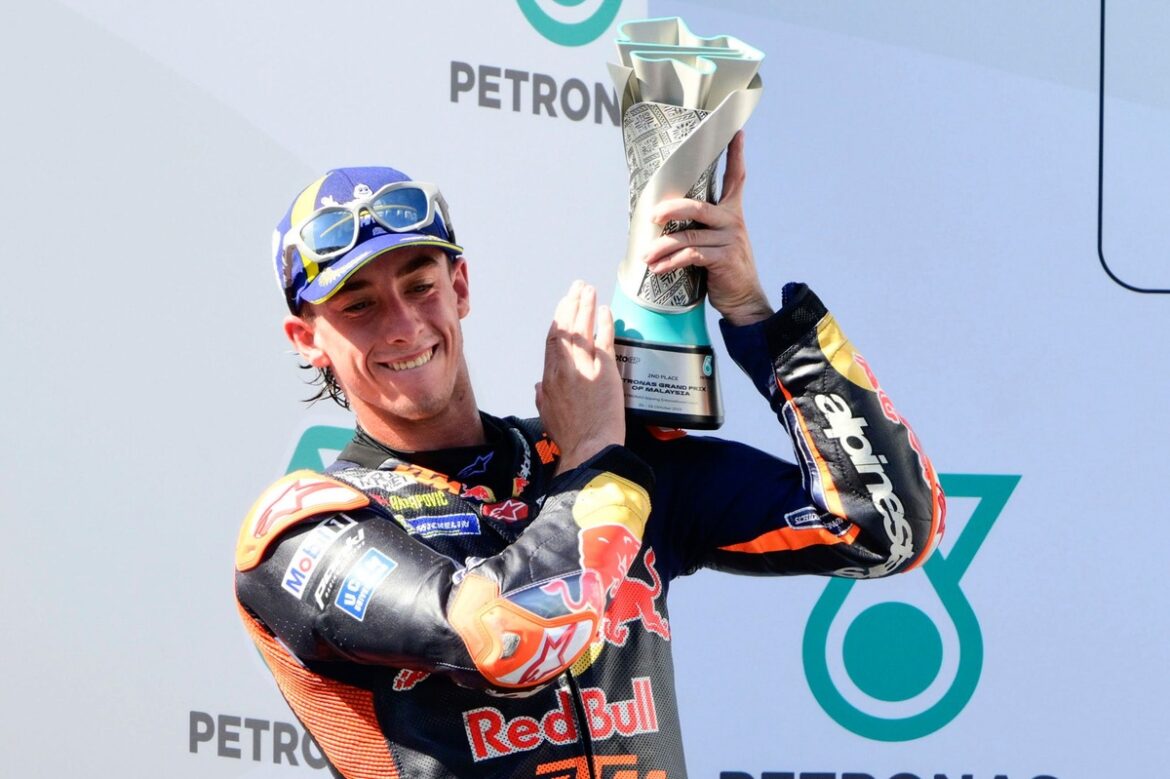Pedro Acosta’s Remarkable Performance at the Malaysian Grand Prix
Pedro Acosta, the talented KTM factory rider, showcased his skills at the recent Malaysian Grand Prix, finishing in an impressive second place. This achievement was particularly noteworthy considering his previous struggles with tire management throughout the season. In a sport where tire performance can dictate race outcomes, Acosta’s decision to turn off electronic aids for tire management proved to be a game-changer, allowing him to secure a podium finish in challenging conditions.
Acosta’s Season Challenges
Throughout the current racing season, Acosta faced numerous hurdles, particularly concerning tire degradation on his KTM RC16. The complexities of managing tire wear became evident as he navigated various races, often finding himself in precarious situations where tire performance was critical. This led many to question his ability to compete effectively, especially when the stakes were high and the temperature on the track soared.
During the lead-up to the Malaysian Grand Prix, Acosta’s prospects seemed dim. He had a disappointing performance in the sprint race, where he initially held second place before ultimately finishing in fourth. This result left fans and analysts wondering if he could maintain competitive pace in the main event, which would take place under even more strenuous conditions.
A Tactical Shift in Strategy
Despite the challenges, Acosta managed to find a way to elevate his performance. For the second time in three weekends, he demonstrated his racing acumen by finishing on the podium, previously having secured a runner-up position in Indonesia. This time, however, Acosta attributed his success to a bold technical decision regarding tire management.
During the post-race press conference, Acosta explained his thought process leading up to the race. He acknowledged that the team had been struggling with their previous strategies, which prompted him to propose a radical change. He stated, “Our problem is quite clear. We [had tried] something that we normally always try, and it was not working, again. I said to the boys, ‘Look, we cannot be worse… let’s go completely in the other direction. And if we mess up, it’s my fault.’” This willingness to take responsibility for the team’s performance exemplified his confidence and determination.
Technical Adjustments for Success
Acosta’s technical adjustments involved removing all electronic controls that typically assist riders in managing tire wear. By opting for a more traditional approach to racing, he aimed to enhance his ability to control the motorcycle manually. “We removed all the controls. I asked them to take everything off, as if it were a normal race, where there was no tire wear,” he explained. Acosta took charge of managing the throttle, brakes, and ride height device without the usual electronic support.
This decision highlighted his skill as a rider and his understanding of the bike’s dynamics. However, he was quick to clarify that this approach would not become a regular practice in future races. He stated, “No, for sure it will not be something that I want to use in the next races.” This acknowledgment reflects Acosta’s awareness of the risks involved in such a strategy, emphasizing the need for balance between technical aids and rider intuition.
KTM’s Performance at Sepang
Acosta’s success was not an isolated incident at the Sepang circuit. His teammate, Enea Bastianini, also demonstrated remarkable capabilities, making significant progress during the race. Starting from 19th on the grid, Bastianini showcased his racing prowess by finishing in second place. His ability to carve through the field added to the excitement of the race, highlighting the competitive nature of the KTM team.
Brad Binder, another KTM rider, also made a commendable effort, moving from 18th to ninth place. These performances underscored the potential of KTM’s lineup, particularly in challenging conditions where tire management played a pivotal role. However, not all KTM riders had a successful outing; Pol Espargaro unfortunately crashed out early in the race, reminding fans of the unpredictable nature of motorsport.
Looking Ahead: The Final Rounds in Europe
With the Malaysian Grand Prix behind them, the MotoGP series is set to return to Europe for its final two rounds. These upcoming races will occur in the cooler climates of Portugal and Spain, where different challenges await the riders. Acosta and his team will need to adapt once again, leveraging the lessons learned from their recent experiences to maintain their competitive edge.
As the season approaches its conclusion, Acosta’s performance in Malaysia serves as a testament to his growth as a rider. His ability to make calculated decisions under pressure and adapt to changing circumstances will be crucial as he faces the final challenges of the season.
In the world of MotoGP, every race offers a unique narrative, shaped by the riders’ skills, team strategies, and the ever-evolving dynamics of the sport. Pedro Acosta’s journey in the Malaysian Grand Prix is a prime example of how determination and innovation can lead to success, even in the face of adversity.
